Hamed Bastami
Secure SWIPT in STAR-RIS Aided Downlink MISO Rate-Splitting Multiple Access Networks
Nov 16, 2022Abstract:Recently, simultaneously transmitting and reflecting reconfigurable intelligent surfaces (STAR-RISs) have emerged as a novel technology that facilitates sustainable communication by providing 360 coverage and new degrees-of-freedom (DoF) for manipulating signal propagation as well as simultaneous wireless information and power transfer (SWIPT). Inspired by these applications, this paper presents a novel STAR-RIS-aided secure SWIPT system for downlink multiple input single output (MISO) Rate-Splitting multiple access (RSMA) networks. The transmitter concurrently communicates with the information receivers (IRs) and sends energy to untrusted energy receivers (UERs). UERs are also able to wiretap the IR streams. The paper assumes that the channel state information (CSI) of the IRs is known at the transmitter. However, only imperfect CSI (ICSI) for the UERs is available at the transmitter. The paper aims to maximize the achievable worst-case sum secrecy rate (WCSSR) of the IRs under a total transmit power constraint, a sum energy constraint for the UERs, and constraints on the transmission and reflection coefficients by jointly optimizing the precoders and the transmission and reflection beamforming at the STAR-RIS. The formulated problem is non-convex with intricately coupled variables, and to tackle this challenge a suboptimal two-step iterative algorithm based on the sequential parametric convex approximation (SPCA) method is proposed. Specifically, the precoders and the transmission and reflection beamforming vectors are optimized alternatingly. Simulations are conducted to show that the proposed RSMA-based algorithm in a STAR-RIS aided network can improve the secrecy of the confidential information and the overall spectral efficiency.
Secrecy Rate of the Cooperative RSMA-Aided UAV Downlink Relying on Optimal Relay Selection
Oct 08, 2022
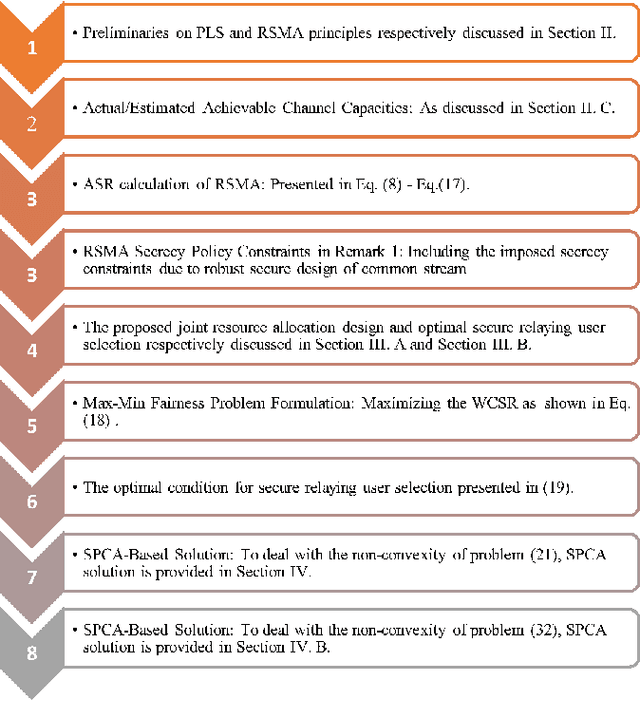
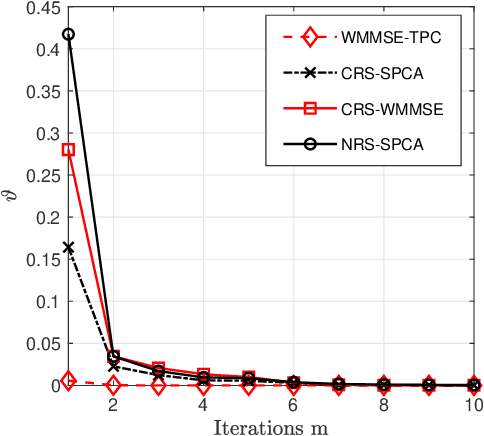
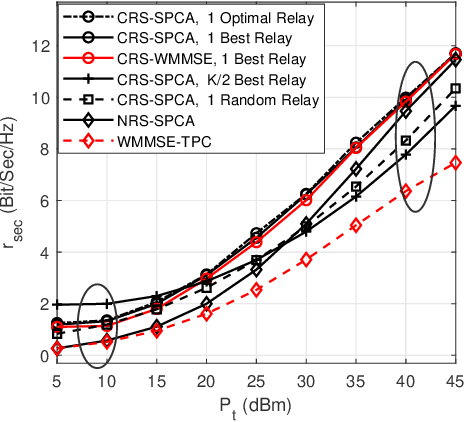
Abstract:The Cooperative Rate-Splitting (CRS) scheme, proposed evolves from conventional Rate Splitting (RS) and relies on forwarding a portion of the RS message by the relaying users. In terms of secrecy enhancement, it has been shown that CRS outperforms its non-cooperative counterpart for a two-user Multiple Input Single Output (MISO) Broadcast Channel (BC). Given the massive connectivity requirement of 6G, we have generalized the existing secure two-user CRS framework to the multi-user framework, where the highest-security users must be selected as the relay nodes. This paper addresses the problem of maximizing the Worst-Case Secrecy Rate (WCSR) in a UAV-aided downlink network where a multi-antenna UAV Base-Station (UAV-BS) serves a group of users in the presence of an external eavesdropper (Eve). We consider a practical scenario in which only imperfect channel state information of Eve is available at the UAV-BS. Accordingly, we conceive a robust and secure resource allocation algorithm, which maximizes the WCSR by jointly optimizing both the Secure Relaying User Selection (SRUS) and the network parameter allocation problem, including the RS transmit precoders, message splitting variables, time slot sharing and power allocation. To circumvent the resultant non-convexity owing to the discrete variables imposed by SRUS, we propose a two-stage algorithm where the SRUS and network parameter allocation are accomplished in two consecutive stages. With regard to the SRUS, we study both centralized and distributed protocols. On the other hand, for jointly optimizing the network parameter allocation we resort to the Sequential Parametric Convex Approximation (SPCA) algorithm. Our numerical results show that the proposed solution significantly outperforms the existing benchmarks for a wide range of network loads in terms of the WCSR.
Large-Scale Rate-Splitting Multiple Access in Uplink UAV Networks: Effective Secrecy Throughput Maximization Under Limited Feedback Channel
Sep 26, 2022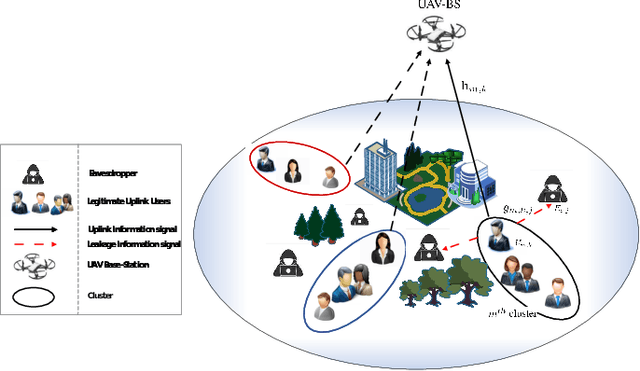
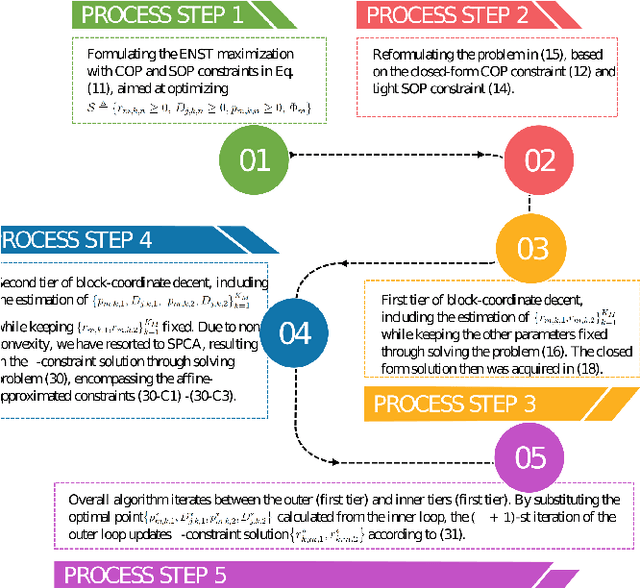
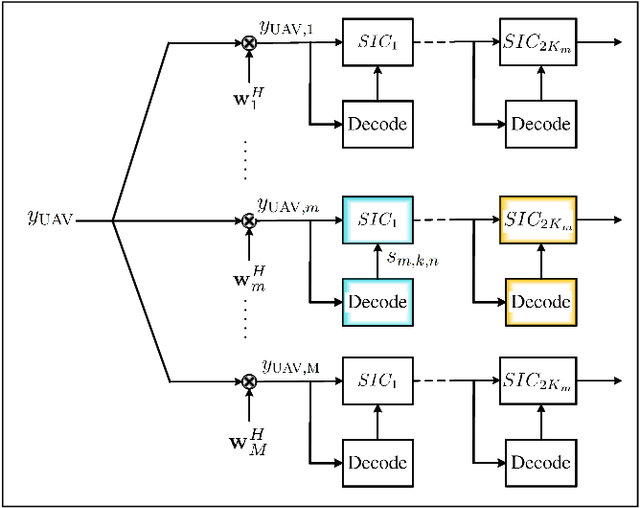

Abstract:UAVs are capable of improving the performance of next generation wireless systems. Specifically, UAVs can be exploited as aerial base-stations (UAV-BS) for supporting legitimate ground users in remote uncovered areas or in environments temporarily requiring high capacity. However, their communication performance is prone to both channel estimation errors and potential eavesdropping. Hence, we investigate the effective secrecy throughput of the UAV-aided uplink, in which rate-splitting multiple access (RSMA) is employed by each legitimate user for secure transmission under the scenario of massive access. To maximize the effective network secrecy throughput in the uplink, the transmission rate vs. power allocation relationship is formulated as a max-min optimization problem, relying on realistic imperfect CSI of both the legitimate users and of the potential eavesdroppers (Eves). We then propose a novel transformation of the associated probabilistic constraints for decoupling the variables, so that our design problem can be solved by alternatively activating the related block coordinate decent programming. In the model considered, each user transmits a superposition of two messages to a UAV-BS, each having different transmit power and the UAV-BS uses a SIC technique to decode the received messages. Given the non-convexity of the problem, it is decoupled into a pair of sub-problems. In particular, we derive a closed form expression for the optimal rate-splitting fraction of each user. Then, given the optimal rate-splitting fraction of each user, the \epsilon-constrainted transmit power of each user is calculated by harnessing SPCA programming.
Secrecy Rate Maximization for Hardware Impaired Untrusted Relaying Network with Deep Learning
Jan 07, 2021



Abstract:This paper investigates the physical layer security design of an untrusted relaying network where the source node coexists with a multi-antenna eavesdropper (Eve). While the communication relies on untrustworthy relay nodes to increase reliability, we aim to protect the confidentiality of information against combined eavesdropping attacks performed by both untrusted relay nodes and Eve. Taking into account the hardware impairments, and power budget constraints, this paper presents a novel approach to jointly optimize relay beamformer and transmit powers aimed at maximizing average secrecy rate (ASR). The resultant optimization problem is non-convex, and a suboptimal solution is obtained through the sequential parametric convex approximation (SPCA) method. In order to prevent any failure due to infeasibility, we propose an iterative initialization algorithm to find the feasible initial point of the original problem. To satisfy low-latency as one of the main key performance indicators (KPI) required in beyond 5G (B5G) communications, a computationally efficient data-driven approach is developed exploiting a deep learning model to improve the ASR while the computational burden is significantly reduced. Simulation results assess the effect of different system parameters on the ASR performance as well as the effectiveness of the proposed deep learning solution in large-scale cases.
 Add to Chrome
Add to Chrome Add to Firefox
Add to Firefox Add to Edge
Add to Edge